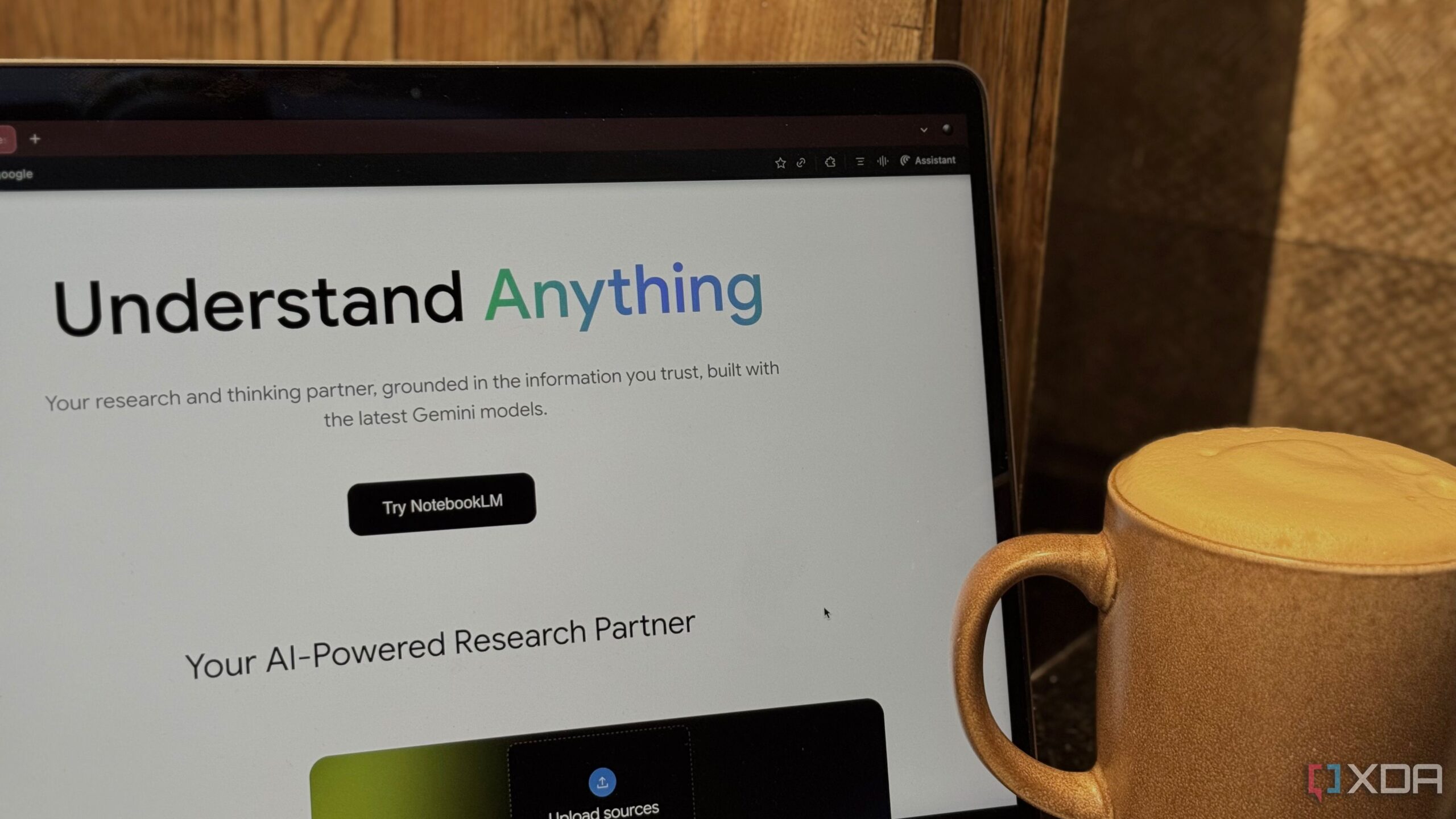Science
Google’s NotebookLM: Not a Note-Taking App, But a Research Tool

Google’s NotebookLM has sparked considerable discussion regarding its intended use and capabilities. While many users mistake it for a standard note-taking application due to its name, it serves a different purpose altogether. NotebookLM is primarily designed as a research assistant, helping users think critically and manage their research rather than simply taking notes.
Understanding NotebookLM’s Core Functionality
At its essence, NotebookLM operates as an AI research tool and thinking partner, as highlighted by its developers. Unlike typical note-taking applications, which provide a blank canvas for users to jot down thoughts and ideas, NotebookLM requires users to upload information first. This unique functionality means that users must gather their material before they can interact with it effectively.
Upon uploading sources, users can utilize features such as converting content into podcasts, short videos, or organized reports. This process emphasizes that NotebookLM is not intended for initial idea generation, but rather for deeper analysis and synthesis of information that has already been collected.
The Limitations of Organization in NotebookLM
One of the most significant drawbacks of NotebookLM is its lack of a comprehensive organization system. Traditional note-taking apps offer tools like folders, tags, and notebooks that help users structure their ideas over time. In contrast, NotebookLM only allows users to create notebooks for their sources, but lacks any advanced categorization or sorting features.
Users often find themselves needing to manage multiple notebooks for different subjects or projects. For example, a student in a Computer Science program might create separate notebooks for each course, leading to complications when topics overlap or require additional organization. The absence of sub-folders or tagging features can make it challenging to retrieve specific information efficiently.
While NotebookLM does provide a basic note-taking feature, allowing users to jot down thoughts within each notebook, it does not offer the full functionality expected from dedicated note-taking software. Users are limited in their ability to manage and categorize notes, which can hinder productivity.
Despite these limitations, users who are determined to utilize NotebookLM for note-taking can develop a workflow that incorporates it alongside traditional note-taking apps. For instance, pairing NotebookLM with tools like Notion, Evernote, or Apple Notes allows for a more streamlined experience, enabling users to enjoy the strengths of both platforms.
While NotebookLM can be integrated into a note-taking process, it is essential for users to recognize its primary function as a research assistant rather than a straightforward note-taking solution. This understanding can help users maximize its potential while avoiding the frustrations that arise from misusing the tool.
In conclusion, while NotebookLM presents innovative features for research and analysis, it is not a substitute for traditional note-taking applications. Users looking for a comprehensive note-taking experience may find better functionality in dedicated apps, while those seeking a supportive research partner can benefit from the unique capabilities that NotebookLM offers.
-

 Science3 weeks ago
Science3 weeks agoIROS 2025 to Showcase Cutting-Edge Robotics Innovations in China
-

 Politics2 weeks ago
Politics2 weeks agoJudge Considers Dismissal of Chelsea Housing Case Citing AI Flaws
-

 World3 weeks ago
World3 weeks agoBravo Company Veterans Honored with Bronze Medals After 56 Years
-

 Lifestyle3 weeks ago
Lifestyle3 weeks agoStone Island’s Logo Worn by Extremists Sparks Brand Dilemma
-

 Health3 weeks ago
Health3 weeks agoStartup Liberate Bio Secures $31 Million for Next-Gen Therapies
-

 Top Stories3 weeks ago
Top Stories3 weeks agoIndonesia Suspends 27,000 Bank Accounts in Online Gambling Crackdown
-

 Health3 weeks ago
Health3 weeks agoTop Hyaluronic Acid Serums for Radiant Skin in 2025
-

 Sports3 weeks ago
Sports3 weeks agoMel Kiper Jr. Reveals Top 25 Prospects for 2026 NFL Draft
-

 World3 weeks ago
World3 weeks agoHoneywell Predicts Record Demand for Business Jets Over Next Decade
-

 Lifestyle3 weeks ago
Lifestyle3 weeks agoMary Morgan Jackson Crowned Little Miss National Peanut Festival 2025
-

 Sports3 weeks ago
Sports3 weeks agoYamamoto’s Mastery Leads Dodgers to 5-1 Victory in NLCS Game 2
-

 Science3 weeks ago
Science3 weeks agoArizona State University Transforms Programming Education Approach









